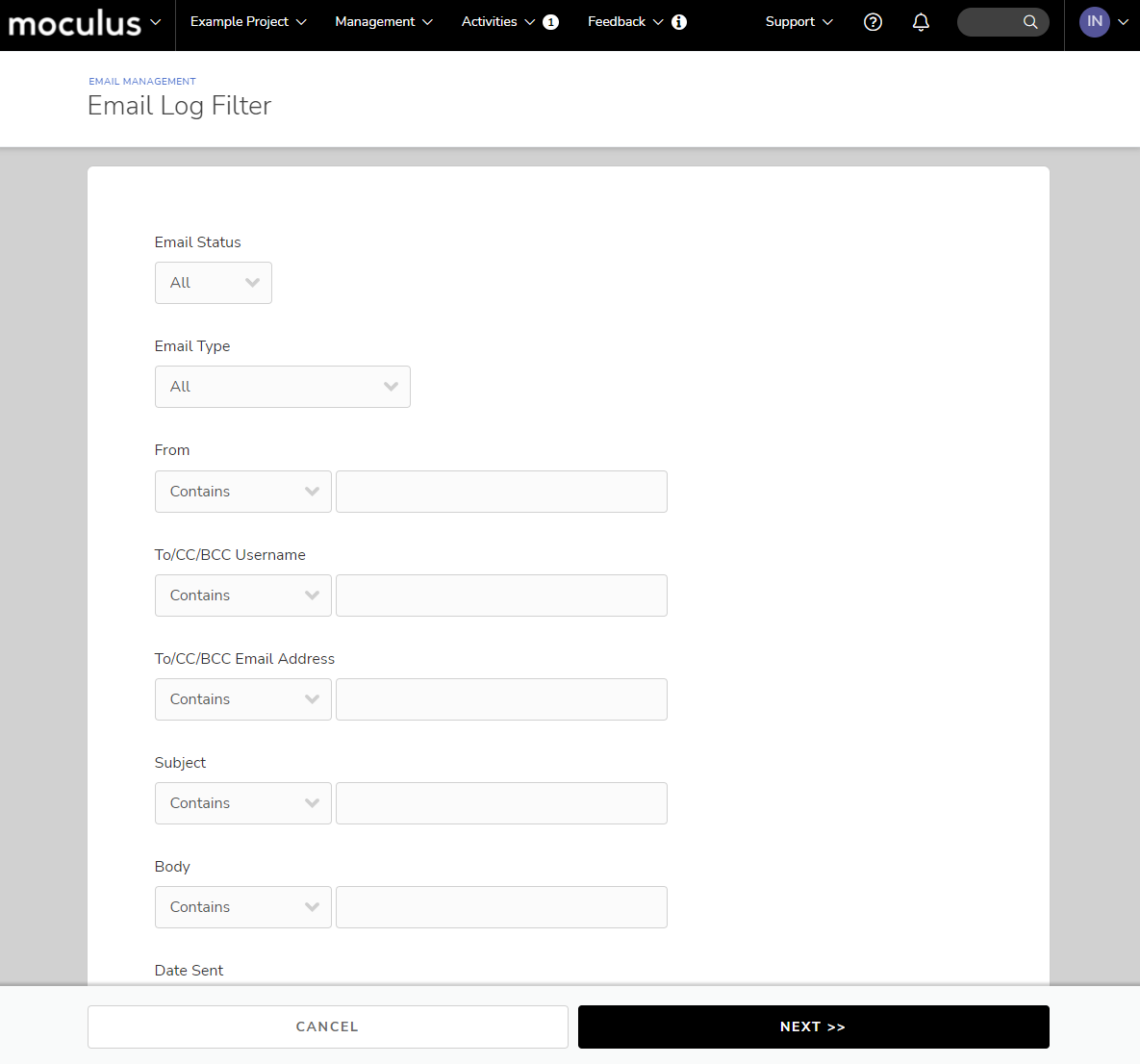Leverage Centercode's Email tool to create and modify templates, search email logs, and re-send or forward emails reliably
This article applies to All editions.
Many issues dealing with emailing users (candidates, applicants, testers, admins, etc.) can be investigated and troubleshot within the Email Management tool. Email Management, found at both Community and Project levels, contains all the email templates separated by type, allows you to create new templates, and includes a Log to filter for specific sends and recipients.
Below are answers to common questions and Email Management best practices.
Table of Contents:
- How do I use Centercode's Email log tool?
- How do I email specific users in a project?
- How can I get email notifications for newly submitted Feedback?
- User isn't receiving follow notification emails
- How do I email invitees who haven’t joined yet?
- How do I automate emails to users?
- Why are users not receiving my emails?
How do I use Centercode's Email Log tool?
Email logs allow you to set filters in order to search through emails previously sent depending on scope (Community or Project). The following are common scenarios addressed by using the Email Log tool to search for emails sent to specific addresses: (using the To/CC/BCC Email Address field, shown here)
- My users didn’t get their verification email. (Read more )
- How can I check to see if my Jira emails are going out?
- My user clicked “Not Interested” in an Onboarding email and deleted their original email - what do I do? (Read more )
- How can I dig up an email that was previously sent?
- How can I see emails that were sent to users in my Community / Project?
- How can I check what email notifications my internal team are receiving?
- Did this user ever exist in my Community / Project?
From Community Tools:
- Click Email
- In the top right, click Create an Email Log Filter
- Set filter criteria depending on your needs
- Click Next to see the results
Notes
- To help narrow down your search, use Date Sent with After or Between (Note: Filters such as After and Between DO NOT include the dates you select, i.e. After 4/21 would be 4/22 and onward)
- Open Advanced Options to set desired results per page (default is 50)
How do I email specific users in a project?
Within the User Management tool, you can use Filters and Views to email specific Users within your Project. (Read more)
How can I get email notifications for newly submitted Feedback?
The simplest way to receive notifications for all newly submitted Feedback of a given type is to auto-follow all feedback within that type. (Read more about auto-following feedback here)
Another method is configuring your Feedback Type’s Workflow to send email notifications. (Read more about Workflow here)
From the Feedback Type menu:
- Hover over the desired Feedback Type
- Click the "Modify" pencil icon of the desired Feedback Type.
- Click the Workflow button in the main body area.
- Click the pencil icon to the right of the desired Status change.
- Check the Send to Individual, Notify Submitter, or Notify New Owner checkbox as desired.
- Click the Email Template link to the right of the desired checkbox.
- Select an existing Email Template from the drop-down or click the Add an Email Template link.
- Fill out the Email Template as desired and click the Submit button at the bottom of the page.
- Repeat steps 5-8 until all desired Email Notifications have been configured.
- The final step is to click Submit at the bottom of the main Workflow page, back in step 4.
User isn't receiving follow notification emails
Original feedback submitters will not receive follow notification emails for their own comments within their own feedback tickets. They will receive follow notification emails when other users leave comments.
How do I email invitees who haven’t joined yet?
Once you’ve used the appropriate Sources to acquire and pool your users, you may need to manage those who haven’t yet converted. This will be done in the Onboarding tool, specifically through the Moderate Candidates icon associated to your Opportunity or Source. (Read more here)
How do I automate emails to users?
A Centercode Macro can automatically perform a task or series of tasks for your Community, Project, admins, and Users, based on user action or on a daily, weekly, or monthly interval. (Read more )
Why are users not receiving my emails?
If your users have indicated that they haven’t been receiving your emails, you’ll want to check several areas to determine the root cause:
- Improperly Configured SPF record
- Using Acceptable Email Domains
- Check Email Logs
- Identify Possible User Error
- Check the End-user's Spam Folder
- Use a third-party tool (ex: BenchmarkEmail.com) to review email's contents

